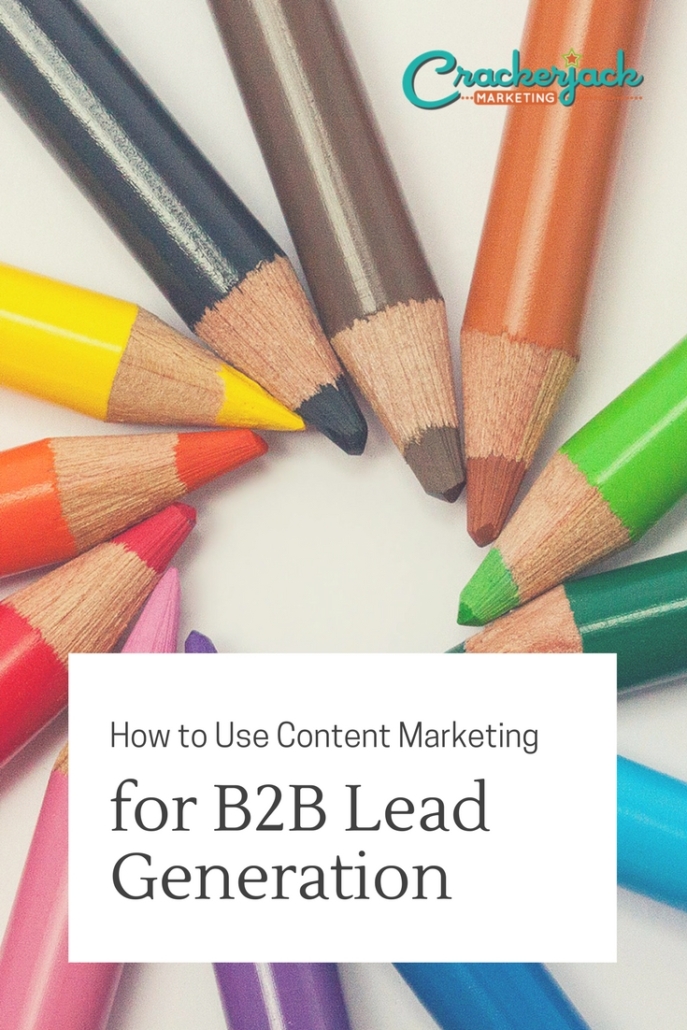How to Use Content Marketing for B2B Lead Generation
Content marketing is a primary lead generation tool. In fact, close to 70 percent of marketers use content marketing for lead generation. Why? It’s been proven over the years that it’s effective and beats out many other efforts at attracting leads. For example, studies demonstrate that many consumers are unimpressed with the plethora of ads they see each day, say “no” to telemarketing calls, and trash carefully crafted marketing messages sent through the postal mail. If 86 percent of potential customers skip ads, you need another way to reach them, and compelling content consistently performs in this area.
Your content, such as a blog, video, or eBooks and whitepapers, can also offer more than just lead generation. Take advantage of great content to help you throughout your lead cycle, to nurture and convert leads. Good content can help many aspects of your B2B business by:
● Showing your prospects that you understand their needs
● Helping your prospects get to know and evaluate your company and its products/services
● Helping your prospects through the decision-making process
● Providing support after a purchase and during implementation and use
● Building customer loyalty
● Encouraging repeat purchases
Sometimes content success can be difficult to come by. It’s not a magic bullet and not everyone does it well. Use these guidelines to help plan your B2B content marketing strategy and you’ll have leads flowing in no time.
Plan Well for Content
In order to enjoy success, you have to know who, why, and how. Consider the following questions as you plan for content marketing:
● What are your specific goals and objectives?
● Who is your audience?
● What does your audience know? What does it need to know? What are its goals?
● What do you want your audience to do? How can you encourage the actions you want?
● How do you differ from your competition? How can you use your content to demonstrate the differences?
Create Content That Meets Your Audience’s Needs
You have compelling information to share, but just waiting until you’re asked for it isn’t a very effective strategy. Instead, you need to learn what your market needs and wants, what it finds interesting, what it finds boring, and what its burning questions are. Once you have answers to these questions, write compelling content that speaks to your audience’s needs and wants, stimulates its interest, and answers its most burning questions.
While you’re at it, be careful with what you share. Avoid content that is overly promotional or focuses on too much on your business. Instead, focus on providing information about the industry and talking about your audience.
Now, this doesn’t mean you can never include promotional content. There is a time and a place for promotional writing. The important thing is to stroke your audience first, make sure you have its attention, and develop a strong rapport. Then, you can insert more promotional content. But keep it to a minimum, so you don’t lose the audience you’ve worked so hard to develop.
Customize Content By Lead Stage
Think about the content that will best serve your audience at each stage of the lead cycle. At the very beginning, informational blogs, e-Books, white papers, websites, etc. make a good fit. Your content should, of course, inform, instruct, interest, and problem-solve. Later, however, after you’ve gotten your prospects interested in engaging with you, you can present your products and services in a more direct way, focusing on providing the solutions they need and adding demos and trials into the mix.
Don’t forget that you can deliver content throughout your lead cycle via email, newsletters, videos, and microsites as well.
Be Consistent
Once you’ve created compelling content for your audience, don’t stop there. To be successful at generating leads with content marketing, and to nurture your leads and get conversions, you have to provide compelling content on a consistent basis. Let your prospects know when they can expect to hear from you next and make them comfortable by delivering quality content on a regular basis.
Share It
Building it and expecting them to come won’t produce the results you expect. Instead, you’ll need to apply a carefully planned strategy to sharing your content and making it easy to find. Include:
● Social media, including social networking, bookmarking, video, and image-posting sites
● Search engine marketing (use Google AdWords to drive traffic directly to your content)
● Other online advertising
● Online news releases
Collect Lead Data
It’s not enough just to put great content on your website. Create a form which is ready to collect data from the leads you generate via content marketing.
Make your lead generation form easy to find, complete, and submit. Request just enough information to get started with the lead, as many prospects will feel put off or offended if you ask too much right off the bat. You can always collect more information later. Often, a name and email address is enough to collect at first, and you can easily obtain that by offering a free downloadable report and requesting an email address to which to send the link.
Now go forth and create, and capture those leads! And please check back with us and leave a comment to let us know how you’re doing.
Photo: Flickr (Lisa_Yarost)
Related posts:
Stephanie Schwab
Latest posts by Stephanie Schwab (see all)
- Small Business Best Practices For Outsourcing Business and Marketing Activities - March 12, 2023
- Social Media and Live Events: Promoting Your Small Business - January 30, 2023
- Why Is the Customer Journey Important for Small Business Owners? - November 29, 2022
- Finding Your Brand Voice - July 27, 2020
- Business Social Media: Farming vs. Fishing - January 9, 2018




